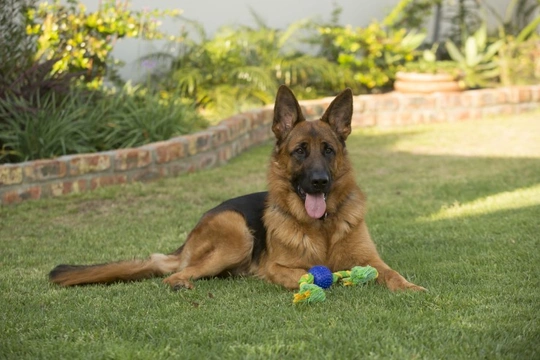
Using weed killer and pesticides safely in a garden your dog uses
Dogs can be very hard on gardens, tracking worn paths through the grass, digging up flower beds, pooping, and generally leaving a mess! However, if you want to maintain a nice garden whilst also allowing your dog to use it, this probably means that you spend some time tackling common garden problems like pests and weeds – and these can be hard to eradicate organically.
Pulling up weeds takes a lot of time and effort, and unless you manage to remove the whole of the weed’s root structure as well as the visible portions, it is likely to grow back in short order. Using products like weed killers or herbicides in a garden that your dog uses is something that you should handle with care – but if you choose the appropriate products and use them safely, they should not pose a threat to the health of your dog.
In this article, we will share some tips and insights on using weed killers and pesticides safely in a garden that your dog uses as well. Read on to learn more.
Choosing the right products
Picking the right product to choose to treat your garden is the first step to protecting your dog. Even weed killers that are potentially harmful to dogs will rarely make your dog ill if they don’t go into the garden until the product has dried and/or it has rained a couple of times to dilute it – but it is still important to pick a product that will both prove effective, and minimise the risks to your dog as well.
Look at the instruction and warning labels of products designed to treat lawns and gardens, and choose one that is pet safe – and vitally, read and follow the instructions for it carefully, as being pet-safe also relies upon your using the product properly, which may well mean keeping your dog away from it for a period of time.
Some ingredients to avoid when buying weed killers for a dog’s garden include arsenic, sodium chlorate, and borax. If you’re not sure about the suitability of any product or its ingredients, you will usually be able to find a phone number or contact details for the company that makes the product in the label, to seek further advice.
How to treat your garden with your dog’s safety in mind
Most weed killers are designed to be sprayed across the garden using a hose and nozzle, which means first diluting the product to the proper ratio with water. Do this outside, or in a utility toom without your dog present, and do it on a dry day when the grass is dry too, unless the usage instructions for the product indicate otherwise.
Treat your grass and try to ensure that you keep the product on the grass or plants only, avoiding paths and patios where your dog walks regularly. Don’t allow your dog back into the garden until the product has thoroughly dried, or until the period indicated in the instructions advises you it is safe for your dog.
Potential problems that can arise with weed killer usage
If you use a dog-safe weed killer and follow the instructions for its usage properly, you shouldn’t find yourself faced with any problems from weed killer usage. However, failing to follow the instructions can potentially compromise your dog’s health, and you should also bear in mind the effects of external factors too, such as how rain can dilute and spread the product after dosage.
If your dog drinks water run-off that contains the weed killer, this may be toxic, which is why you shouldn’t let your dog into the garden while the product itself is still wet, or if it rains after dosage, until the ground has dried out again.
Additionally, if your dog chews or eats plants or picks up sticks in the garden, this can cause your dog to ingest weed killer too. Make sure of course that none of your dog’s toys, bowls, or anything else left out on the lawn is removed before you dose it.
Finally, as is the case with all chemicals and cleaning products, keep them well out of the reach of your dog and store them safely in a closed cupboard your dog cannot access when they are not in use.
Recognising the symptoms of poisoning or toxicity in your dog
Even if you don’t have a garden of your own to treat, it is a good idea for all dog owners to know the basic symptoms of poisoning or toxicity that products like weed killer can produce in dogs that ingest them.
Ingesting a toxin of this type is apt to have a fast and acute effect on your dog, and cause symptoms such as vomiting and diarrhoea, panting, shivering and respiratory distress, as well as potentially leading to problems walking, and other signs of serious pain and discomfort.
If your dog displays any symptoms of this type, contact your vet as a matter of urgency, and take along the packaging or label of any weed killers or herbicides that might have caused the issue when you go to the vet, to assist with diagnosis and treatment.



